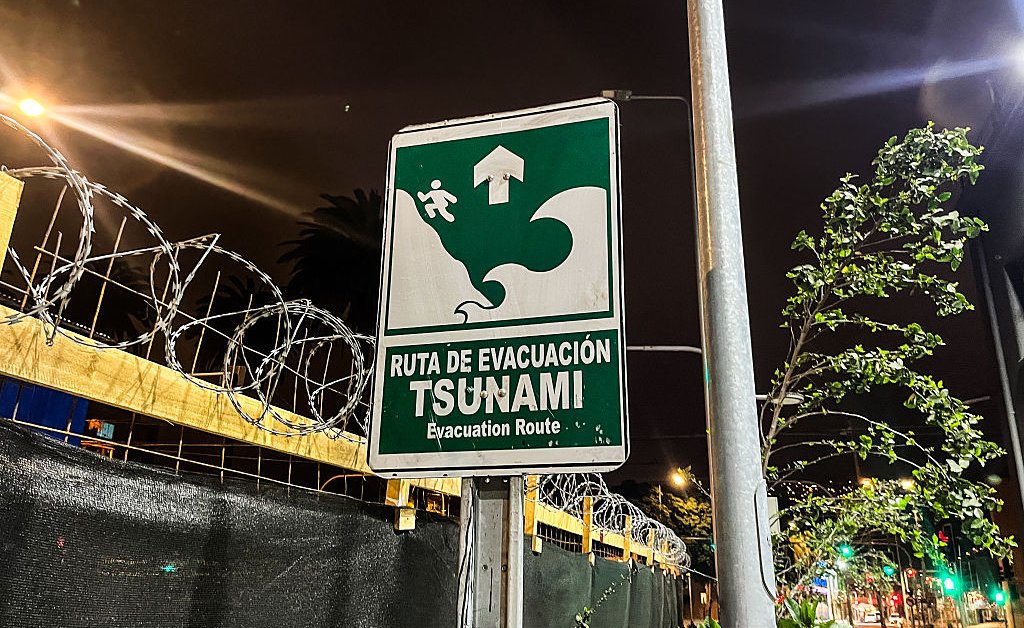How To Survive A Tsunami: Essential Preparedness And Evacuation Tips

Welcome to your ultimate source for breaking news, trending updates, and in-depth stories from around the world. Whether it's politics, technology, entertainment, sports, or lifestyle, we bring you real-time updates that keep you informed and ahead of the curve.
Our team works tirelessly to ensure you never miss a moment. From the latest developments in global events to the most talked-about topics on social media, our news platform is designed to deliver accurate and timely information, all in one place.
Stay in the know and join thousands of readers who trust us for reliable, up-to-date content. Explore our expertly curated articles and dive deeper into the stories that matter to you. Visit Best Website now and be part of the conversation. Don't miss out on the headlines that shape our world!
Table of Contents
How to Survive a Tsunami: Essential Preparedness and Evacuation Tips
Tsunamis, those devastating walls of water unleashed by underwater earthquakes or volcanic eruptions, are a terrifying force of nature. While predicting their exact timing remains impossible, understanding how to prepare and react is crucial for survival. This article outlines essential preparedness strategies and evacuation tips to help you navigate this perilous situation.
Understanding the Threat: Recognizing Tsunami Warning Signs
Before the towering waves arrive, there are often subtle warning signs. Knowing these can provide precious time to react:
- Earthquake: A strong earthquake, particularly one lasting longer than 20 seconds, especially near the coast, should trigger immediate alert. Don't wait for official warnings; your immediate reaction could save your life.
- Unusual ocean behavior: A rapid receding of the sea, exposing normally submerged areas, is a major red flag. This is often followed by a much larger surge. Similarly, unusual surging or strong currents can indicate an approaching tsunami.
- Official warnings: Heed official tsunami warnings issued by national meteorological agencies and emergency services. These warnings utilize sophisticated monitoring systems and provide critical information. Sign up for emergency alerts on your phone.
Preparing for the Inevitable: Building Your Tsunami Survival Kit
Preparation is key. A well-stocked emergency kit can make a significant difference during and after a tsunami:
- Emergency supplies: This includes bottled water, non-perishable food, a first-aid kit with essential medications, a flashlight with extra batteries, a portable radio, and a whistle.
- Important documents: Keep copies of crucial documents, such as identification, insurance information, and medical records, in a waterproof container.
- Communication plan: Establish a communication plan with family members and identify a designated meeting point outside the affected area.
- Emergency evacuation plan: Identify multiple evacuation routes and safe zones in advance. Know the elevation of your home and surrounding areas; higher ground is your best bet.
Evacuation: Your Lifeline During a Tsunami
When a tsunami warning is issued or you observe warning signs, evacuation is paramount. Here's what to do:
- Evacuate immediately: Don't delay. Time is of the essence. Move quickly to higher ground, well above the reach of potential waves. Aim for at least 100 feet (30 meters) above sea level, or several miles inland.
- Follow official instructions: Obey instructions given by emergency personnel. They will guide you to safe zones and provide crucial information.
- Avoid low-lying areas: Stay away from beaches, harbors, and coastal areas. The force of a tsunami can be incredibly powerful, and even seemingly safe areas can be swiftly inundated.
- Use designated evacuation routes: Pre-plan your routes and use well-marked evacuation routes whenever possible.
- Protect yourself: During evacuation, protect yourself from falling debris and other hazards. Wear sturdy shoes.
Post-Tsunami Survival:
Surviving the initial wave is just the first step. After the tsunami, stay alert for aftershocks and potential further waves. Remain in the designated safe zone until official announcements declare it safe to return. Seek medical attention if needed and cooperate with rescue and relief efforts.
Further Resources:
- National Oceanic and Atmospheric Administration (NOAA): [Link to NOAA Tsunami website]
- Your local emergency management agency: Contact your local agency for specific tsunami preparedness guidelines for your region.
Remember, preparedness and swift action are your best defense against the devastating power of a tsunami. By following these guidelines, you significantly increase your chances of survival. Don't wait until it's too late; prepare today.

Thank you for visiting our website, your trusted source for the latest updates and in-depth coverage on How To Survive A Tsunami: Essential Preparedness And Evacuation Tips. We're committed to keeping you informed with timely and accurate information to meet your curiosity and needs.
If you have any questions, suggestions, or feedback, we'd love to hear from you. Your insights are valuable to us and help us improve to serve you better. Feel free to reach out through our contact page.
Don't forget to bookmark our website and check back regularly for the latest headlines and trending topics. See you next time, and thank you for being part of our growing community!
Featured Posts
-
 Analyzing The 2025 Sec Football Season Cbs Sports Schedule Strength Rankings
Aug 01, 2025
Analyzing The 2025 Sec Football Season Cbs Sports Schedule Strength Rankings
Aug 01, 2025 -
 Arsenal Tottenham Hotspur Friendship Membership Details And Renewal
Aug 01, 2025
Arsenal Tottenham Hotspur Friendship Membership Details And Renewal
Aug 01, 2025 -
 Positive Q2 Results Drive Bristol Myers Squibb Share Price Increase
Aug 01, 2025
Positive Q2 Results Drive Bristol Myers Squibb Share Price Increase
Aug 01, 2025 -
 Stromans Short Start Phillies Shut Down Mets Pitcher
Aug 01, 2025
Stromans Short Start Phillies Shut Down Mets Pitcher
Aug 01, 2025 -
 Predicting Success 2025 Sec Strength Of Schedule Impacts Georgia And Oklahoma
Aug 01, 2025
Predicting Success 2025 Sec Strength Of Schedule Impacts Georgia And Oklahoma
Aug 01, 2025
Latest Posts
-
 Live Stream Wwe Raw Detroit Catch The Hulk Hogan Celebration
Aug 02, 2025
Live Stream Wwe Raw Detroit Catch The Hulk Hogan Celebration
Aug 02, 2025 -
 Ai Chatbots New Research Reveals Vulnerability To Self Harm Advice Requests
Aug 02, 2025
Ai Chatbots New Research Reveals Vulnerability To Self Harm Advice Requests
Aug 02, 2025 -
 Ai Chatbot Manipulation Researchers Demonstrate Potential For Self Harm Guidance
Aug 02, 2025
Ai Chatbot Manipulation Researchers Demonstrate Potential For Self Harm Guidance
Aug 02, 2025 -
 Report Nfl Makes Crucial Decision Regarding Red Zone Channel
Aug 02, 2025
Report Nfl Makes Crucial Decision Regarding Red Zone Channel
Aug 02, 2025 -
 Reigns And Uso Fall To Reed And Breakker Full Raw Results July 28 2025
Aug 02, 2025
Reigns And Uso Fall To Reed And Breakker Full Raw Results July 28 2025
Aug 02, 2025
